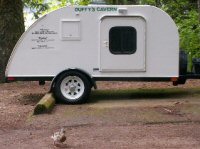jmedclay wrote:Why so long for primer to cure? My estimate is:
It's an oil (alkyd) based primer which I now understand cures through an oxidative process. The epoxy coating on one side prevented access to oxygen. The second coat, applied before the first had cured, terminated access to oxygen from the other side. I think the second primer coat isn't completely impervious to oxygen migration, but one can imagine is slows it down an awful lot. Primer brushed edges adjacent un-primed areas only got one coat, right at the feathered edge; those have cured nicely. If it hasn't cured by the time I finish everything else, I'll just sand it all off and start the paint afresh.
BTW: An additional guess is that if the cabin hadn't been encapsulated in epoxy, the oxygen in the pore-space of the wood would have been available to drive the cure process, at least to some degree.
Not sure your analysis is the reason, but try searching boat building forums for epoxy/paint or varnish compatibility issues. This has been brought up several times. Also, most of the epoxy suppliers have recommendations regarding coatings that work (or don't) with their product.
I experienced non hardening paint over a 2 week cured epoxy/glass job on a boat. I tried cheaping out on the project because it was a restore job.
The well known paint never dried at all. This was a quality alkyd enamel from a Big Box. I ended up scraping off the the paint, using a scraper, scotchbrite, and solvent. It took quite a bit of effort, but once I resanded everything, it was all gone. I then applied Brightsides which dried hard enough to sand over night. The second coat made it look like a custom spray job.
The moral of the story is always, always pre-try your final finish before totally committing.
I think the issue of compatibility is from manufacturers constantly changing formulations to meet government requirements and, reducing costs, or having been bought out by some that is now making crap. What worked fine yesterday, may not work at all today.
As for Amine blush, I stopped using epoxy that produces blush a long time ago. However, I wet sand with water just to be sure before applying final finish. I have never had an issue with blush, but their is always a first time!
Larry C
